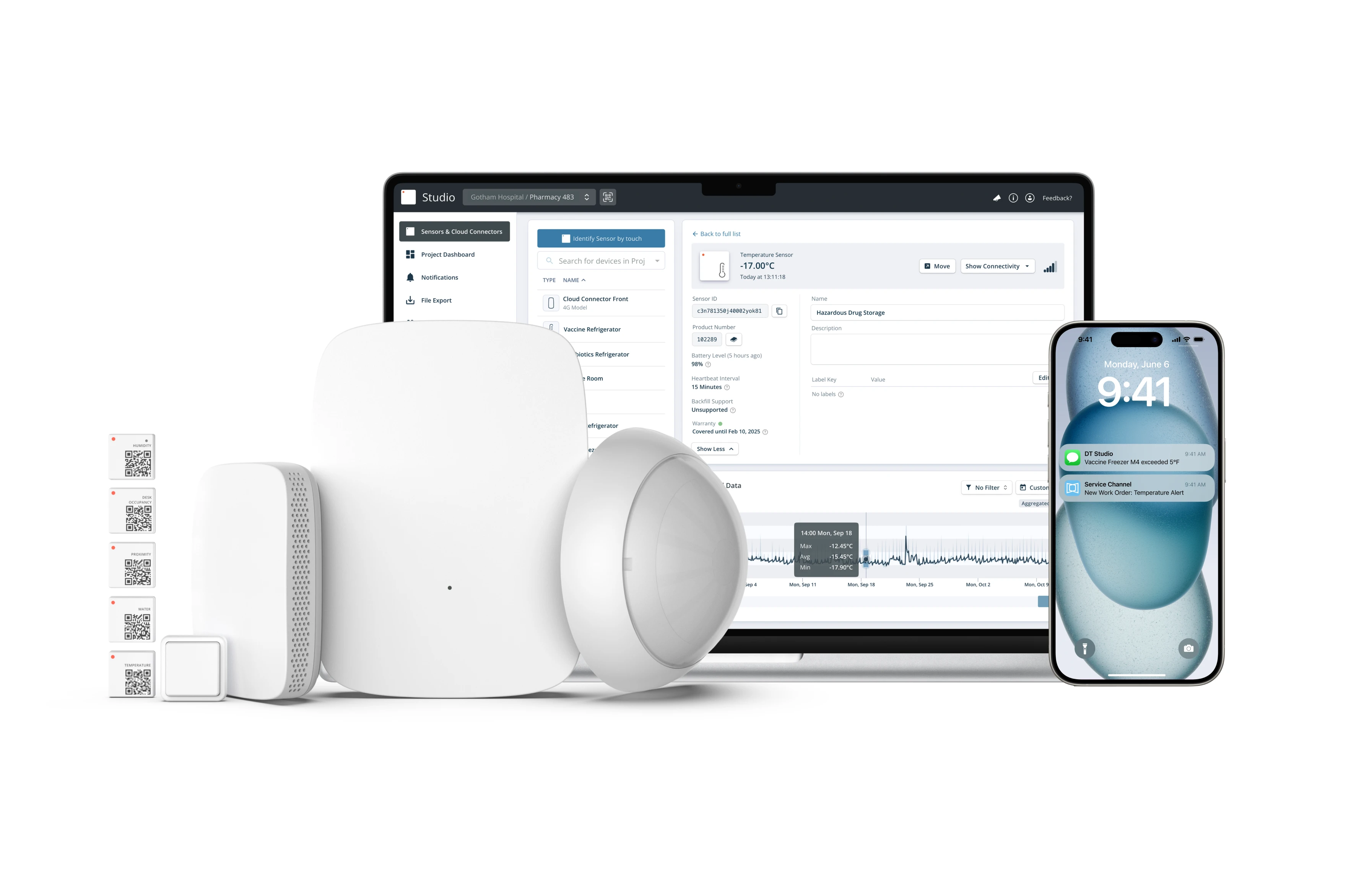Carbon Dioxide (CO2) and Employee Productivity: All You Need To Know

The potentially harmful effects of Carbon Dioxide (CO2) were first proposed by French nobleman and chemist Antoine-Laurent de Lavoisier in 1774. He noticed that when expelled in breathing, it made crowded rooms uncomfortable. Lavoisier thus suggested that too much carbon dioxide was unhealthy.
As science has evolved, it agrees with Laoisier’s observations. It is now clear that highly elevated levels of CO2 are indeed a danger to people’s health. These experiments have also identified that increased concentrations of CO2 also affect people’s cognitive effectiveness and their ability to work efficiently.
Armed with this knowledge, it is critical that companies measure indoor CO2 levels of CO2 and undertake action to quickly reduce the concentration.
In this article, we walk you through all health & productivity-related issues that unbalanced levels of CO2 can bring. We also present a simple technology that can help measure CO2 levels and further help automate ventilation.
What Happens If CO2 Levels Are Too High?

Carbon Dioxide is an odorless and colorless gas that is created in several ways, the most common being through the burning of fossil fuels. However, in an office environment, CO2 mostly occurs as a result of people breathing. In some instances, it can also be generated by faulty office equipment like ventilation units and refrigerators.
Normal concentrations of CO2 are between 250 to 400 parts per million (ppm) outside and typically between 400 and 1,000 ppm for occupied indoor spaces with good air conditioning and ventilation.
When an indoor environment experiences increased levels of CO2 (usually due to poor ventilation), anecdotal evidence showed that office workers felt tired, became irritable, or had problems concentrating.
Scientific Studies Linking CO2 Levels and Poor Employee Health and Productivity
As a result of frequent claims, several academic studies and investigations have been undertaken into human reactions to exposure to elevated concentrations of CO2.
The table below shows the impact that exposure to excessive CO2 levels can have on people’s health (summary of findings from Satish et al., 2012 and Laurent et al., 2021).
Another study that investigated workplace productivity and environmental conditions that specifically targeted office workers found that:
- Workers were able to work up to 60% faster in lower CO2 concentrations
- High CO2 levels can cause offices to feel ‘stuffy’, which is mistakenly put down to high temperatures
- An increased intake of CO2 can lead to poor decision-making, slower reaction times, and increased tiredness among employees
The evidence, both anecdotal and empirical, clearly identifies that higher CO2 concentrations have an adverse effect on employee well-being and productivity.
Using CO2 Sensors to Identify Problematic CO2 Levels & Control Building Ventilation

Elevated levels of CO2 need to be reduced as quickly and efficiently as possible.
However, existing building management systems (BMS) and heating, ventilation, and air-conditioning (HVAC) solutions are typically not sufficiently flexible or granular enough to be able to effectively optimize indoor environmental conditions.
The easiest and most cost-efficient way to achieve this is using Internet of Things (IoT) based CO2 sensors together with a BMS and remotely manageable HVAC and ventilation systems.
Such a solution is suitable both for new, “smart”, buildings as well as older offices that can be retrofitted with new technology.
The requirement for accurate and effective monitoring is arguably more important for older constructions. Newer buildings are usually built with efficiency and employee wellbeing as an integral part of their design.
Demand Controlled Ventilation (DCV) and Intelligent Ventilation Systems

The generated data from CO2 sensors can be integrated into intelligent building ventilation systems. This gives you automatic and remote control to increase and optimize airflow into areas where high concentrations of CO2 have been detected. This is called Demand Controlled Ventilation (DCV).
Actual CO2 levels will depend on the number of employees present, and so can change quickly and in an unpredictable way.
The DCV will adjust the amount of outside air that is introduced into the building, based on the actual needs at any time. The ventilation system thus provides optimal air control for the employees’ environment as well as optimized cost control.
To gain the maximum benefit from this solution, it is extremely important that the sensors are deployed in the correct location. For example, placing sensors next to open windows will greatly reduce the local CO2 concentration, resulting in under ventilation. But placing sensors in an area where CO2 is produced, such as in a print room, may lead to overventilation.
Benefits of Lowering Internal CO2 Levels

As a result of improved air quality and ventilation, employees have a much more comfortable and pleasant working atmosphere. This is beneficial to both the employee and the company.
Sensor-based solutions can:
- Improve staff cognitive capability, speed, and accuracy of work and output
- Make employees feel comfortable in their environment
- Reduce the impact of CO2 on employee health, both in the short and longer-term
Organizations that optimize their workplace indoor environments will create the potential to improve their staff performance and productivity.
And as more companies wake up to the possibilities of deploying CO2 sensors, sensor-based solutions are now more in demand than ever.
Bottomline
The harmful effects of CO2 have long been identified, with recent studies empirically confirming these long-held suspicions.
Using a combination of IoT-based CO2 sensors, a Building Management System, and “intelligent” ventilation systems, the air in your workplace can always be healthy. Productivity has been shown to improve through better concentration, accuracy, and the “feel good” factor experienced by employees.
And you can now build IoT services with our CO2 sensors at heart.
.webp)
Ensure Healthy Indoor Spaces By Monitoring CO2 Levels
Get Started


.png)


